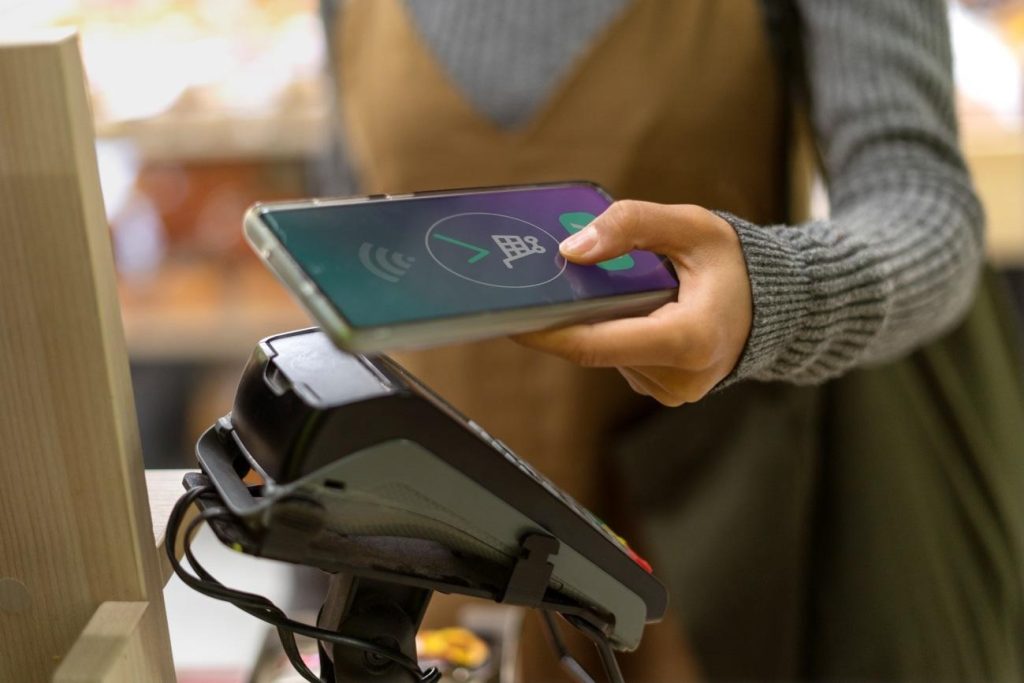1. Mobile Wallets in the Digital Economy, an introduction
Mobile wallets are now a requisite in the field of digital payment, providing ease and versatility for both customers as well as businesses. These digital platforms allow users to store and organize different payment options — from credit cards to virtual currencies, all in one place. Mobile wallets are moving in this direction, and going forward to be updated with newer trends most of the features will get integrated into them as part of which Information usage fees would also become a norm.
Data usage fees — billed for use of digital content, services or applications are a critical component in the mobile payments landscape. Mobile wallets are evolving to incorporate these fees right into the transaction, as consumers become more adept at conducting their day-to-day payments entire with mobile device in hand – from digital content subscriptions to in-app purchases. Still, plating such fees with mobile wallets offer a new set of opportunities and challenges especially in the aspect like security and user fulfillment.
That is the topic of this article: how mobile wallets combine data usage costs, what type of security we must use to guarantee that it will work properly; as well as its pros and cons that come with such combination in addition to tips for tracking these fees by users and service providers.
2. Information usage charge and Integration with Mobile Wallet
Definition of Infomration Keep Usage tariffs
These include small fees consumers pay to access digital content, services or apps—often referred to as information-usage fees. These charges are usually billed to your mobile carrier or through third party payment processors for content, subscriptions and premium features. These fees are generally small, but with their common usage they can become a significant cost to the user over time.
When to request information fee includes (examples):
Fee For Download of Digital Content Such As Movies, Music and e-Books
Paywall for streaming platforms or news sites
Can charge in-app purchase fees for additional features or content
2. How information usage fees are intergrated to Mobile Wallets 2.1 — The New Pay-per-Use Business Model and the Adoption of an Open Source Pricing Language for Services Vending Machines Far knows — My insights on telecommunications, IoT DLT based products!
Mobile wallets are a convenient way for consumers to pay with ease and security. The common recipe combined with the charge for Information Utilization, usually goes as follows:
Step 1: A consumer invites into a transaction, usually by accessing online content or services via an app / Website.
Transaction Charging: The system determines the information price one needs to pay for a particular fee (one-off or recurring subscription charge).
PAYMENT EXECUTIONUser validates the payment on their mobile wallet and it puts through the transaction / fee.
By incorporating these fees with mobile wallets, the payment becomes more user-friendly which eases friction and enhances experience for small value payments.
3. Benefits of Incorporating Data Usage Charges in Mobile Wallets
3.1 Convenience and Speed
This creates a smooth payment experience for those using their mobile wallets as well. This method directs information charges into the check framework, where clients can get to advanced substance and administrations without contributing installment data each time they need a thing. For example— there are no more separate billing processes made and hence transaction is way faster with bare minimume click, bother(get headaches), wait time.
3.2 Higher-earning for Service Providers
Businesses will be able to utilize mobile wallets for digital content and services easily with the incorporation of information usage fees. Mobile wallets provide an efficient way to accept microtransactions given the increasing dependence on mobile. With this addition, service providers can fuel new revenue streams arising from the growing popularity of micro-purchases and subscriptions for convenient user purchases.
3.2 Transparency and User Control
Mobile wallets are able to consolidate payments and information usage fees into one place, which promotes transparency in the eyes of users. When consumers can keep track of their spend, set up detailed billing alerts and subscriptions management control using preference centres this could significantly decrease the likelihood that a customer will become ethically damaged. That level of control can mean better user satisfaction and rushed feelings from wondering if there is some unseen fee hiding just around the corner.
4. Risks and Obstacles to the Integration of Information Use Charges
4.1 Security Concerns
However, free of charge information use fees in mobile wallets suggest that there are several security issues with the integration. Open integration is very attractive for fraudsters in the case of mobile payment solutions. This could be malicious behaviour such as illegal opt-in, data scraping or someone trying to do a man in the middle attack.
4.2 Unclear Billing Practices
Billing Is So Often Confusing The primary hurdle that users face in data usage charges is uncertainty or lack of clarity over billing. The issue with not being able to transparently layout costs and fees (상품권 휴대폰결제) also leads customers to get a bill they were completely unaware of or disputed because this charge is for that, etc. Ambiguities in billing mechanisms can further erode trust and thwart mobile wallet adoption as well.
4.3 Potential for Hidden Fees
These information usage fees can be hidden in with app subscriptions or reoccurring charges. Transparency is a critical factor when it comes to in-app purchase models, and the absence of this transparency can result in angry customers who sign up for services without realizing they are racking up higher bills due to additional fees. Suddenly making users pay a crazy amount of cash without telling them is one thing you can understand ends up adding to unexpected money issues.
5. How to Handle the Fine Print of Mobile Wallet Information Usage Fees
Transparent billing practices 5.1
Service providers must provide transparent billing for information usage fees, so the user knows when they know that users are setting information usage costs This includes:
Informing customers about how much something will cost before delivering goods or services
Full itemization on the bill of any and all charges associated with data usage.
Providing users with notifications of every Transaction in real-time to track expenses.
8.1 How to enable strong authentication and encryption
Mobile payment systems require some of the highest levels of security. Service providers may enforce strong authentication methods like: — To avoid any unauthorized access, frauds users
Two-Factor Authentication (2FA) involves an additional layer of protection which is as well a second form of identification, like the PIN or biometric scan before settling any transaction.
Encrypt: Securely encryption payment details and data usage information can help prevent breaches as well as protect against hacking.
Education Related to Fee-based Use of Data 5.
This is why consumer education remains key in advancing user satisfaction while limiting fraud. The user should be notified of:
The kinds of information usage fees that may be charged
Managing and tracking their subscriptions
Recognizing and avoiding potential unauthorized charges scams.
These risks and solutions should be actively communicated to service providers via notifications, app tutorials, customer support resources etc.
5.4 Dispute Resolution and Refunds
Billing disputes cause unpleasant user experience, and in order to prevent it the service provider should have a fast solution. This includes:
Streamlined refund flow that enables users to quickly raise issues for unauthorized charges
A set of consumer engagement tools to address issues about information usage costs
When we have a system in place to address disputes this ensures that there is transparency and good faith exist from the service provider towards their consumer.
6. FAQs (Frequently Asked Questions)
Question 6.1 What Is An Information Usage Fee?
Information Utilization Charges: These little costs are exacted each time an advanced service, content or application is gotten to through a portable platform. These charges usually come from phone providers or other payment intermediaries.
6.2 How to avoid users getting charged illegally
How to protect yourself Include the following in your training
Two-factor authentication (2FA)
Checking their billing statements frequently
Having transactions in question filed at once
6.3 Is the Use of Information Reimbursable?
Typically these charges can be disputed with the service provider or mobile carrier, and users may request a refund if they notice unauthorized fees or charges — depending on any given providers “Refund Policy”.
7. Wrap-up: Mobile Wallets and the Cost of Information Usage
Mobile wallets proven to lead the digital payment space continue to ensure their significant market position by associating information usage fees. These fees do serve a useful purpose in processing low value transactions without the need for special arrangements, but can also lead to problems such as security and identity confirmation due lack of transparency or user approval.
Service providers can overcome these difficulties by adopting safe payment mechanisms and open billing practices, while also educating their consumers to build a hassle-free secure ecosystem. With the rapid development of 정보이용료 현금화mobile payment technology, implementing reference points in data consumption fees will be vital to gain consumer trust and grow digital payment ecosystems.





More Stories
What 2025’s Credit Limits Mean — And How to Access Cash Fast
Complete Guide to Selling Digital Products Using MicroCommerce
MapleWells.ca Review Online Financial Education and Blockchain Technology